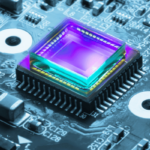Combining Multiple Inventions in an Single Patent Application
As a business, cost is always a concern. However, is combining multiple related inventions into a single patent application worth the cost savings? While it may be effective in certain circumstances, many considerations must be addressed before selecting a filing strategy. This question is distinct from the inverse, which you learn more about here: Do I Need Multiple Patents on the Same Invention?
A patent application has three essential parts: drawings, specifications, and claims. While we can disclose multiple inventions in the figures and specification portions of the patent application, we can only submit one claim set per application. A single patent application can only claim one invention at a time, so multiple applications will eventually be required to protect all inventions in the application.
If you are to submit a single application that claims distinct inventions, you will likely receive a “Restriction Requirement” from the USPTO. With a Restriction Requirement, the USPTO requires, by way of determination of the Examiner, that the applicant withdraw claims unrelated to each other as grouped by the Patent Examiner. This topic is also explored, from a different perspective, here: My New Invention Has Many Uses – Do I Need Multiple Patents?
Therefore, while the originally filed patent application with multiple inventions can support the claims of the other inventions, eventually, each invention will require its own application.
Some of the Risks Associated With Combining Multiple Inventions Into a Single Application Are the Following:
1. Licensing and Sale Issues:
Segmenting and dividing portions of a patent for sale is a problem that can be avoided. When multiple inventions are claimed in a single patent, excluding claims that are irrelevant to the specific sale or license is unorthodox and uncertain, at best. Therefore, claims to multiple inventions in a single patent may cause the subsequent sale or license of the patent to include more of the technology than necessarily required for the particular license – thereby inadvertently expanding the scope of the license.
2. Public Disclosure:
All inventions disclosed in a patent application are made available to the public simultaneously when the patent application is published. Moreover, any subject matter disclosed in the specification and figures, but not claimed in the granted patent is forfeited to the public upon the examination of all pending claims.
Then, when multiple inventions are disclosed in a single patent application, but only one of those is, for instance, becomes commercially successful or survives patent examination, you would no longer have the option to keep any of the other disclosed inventions in that patent application as a trade secret.
For example, if you file a patent on two inventions but only file claims on one and are only granted claims on one, then that other, unclaimed invention entered the public domain upon the completion of the examination, and you can no longer make a claim to it. To avoid this scenario, the Applicant must five a divisional patent application with claims separate protecting the other inventions must be filed to avoid public forfeiture.
3. Invalidity:
Invalidity means that the patent was improperly granted. Invalidity can put the entire patent family at risk if the claims become invalid. If the patent claim set is invalidated, you have to change your claims and undergo reexamination. Anyone in public can request a reexamination of a granted patent. In reexamination, they will search everything in your specification and figures and try to throw as much dirt as possible. In this process, you expose all inventions to potential invalidity.
In conclusion:
Combining multiple inventions into a single patent application may save some costs, but it is not without risks. It may be best to separate patents, especially if they are related, publicly disclosed, and have potential licensing or sale issues. Discussing these decisions with a licensed patent professional is recommended as best practice, as each situation has unique considerations.
Related Articles:
- Can I Break a Provisional Patent into Multiple Filings?
- Should a New Company File Multiple Patents or One Big Patent?
Seeking assistance with your patent application? Learn more about our patent services or schedule your free initial consultation.
Yuri L. Eliezer, Esq.
Patent Attorney
Managing Partner



